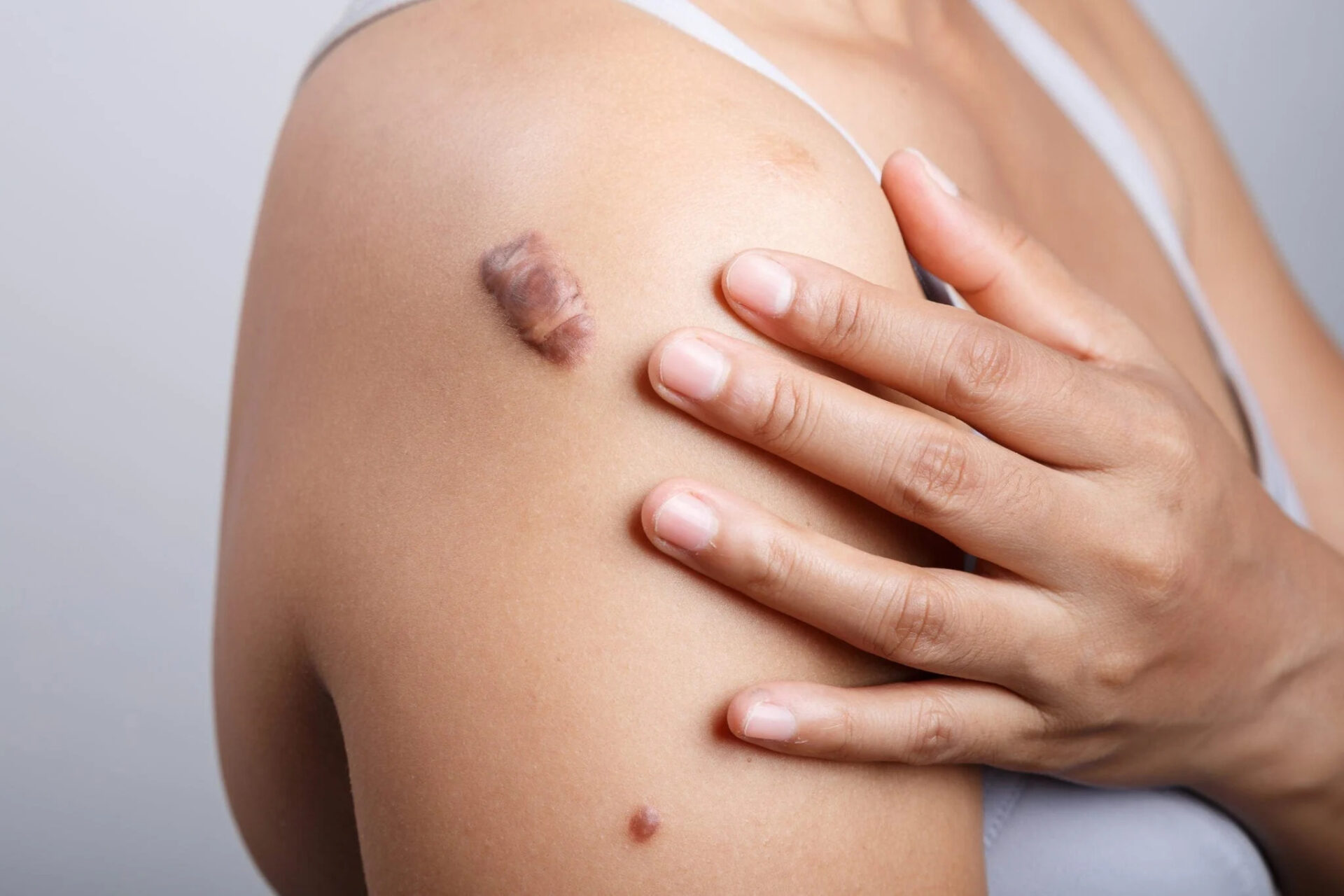
Keloids & other Scars
Scars occur as a natural part of body’s wound healing process. Any trauma to skin which hurts deeper skin layer(dermis), will form a scar. During wound healing, if more than required new tissue is formed then it leads to an elevated or raised scar. These scars occur mostly in the wounds which are under tension and are seen as thick dark overgrowth of skin.
Keloids are a type of raised scars which grow beyond the margins of the original wound due to uncontrolled new tissue formation and can become big and fleshy.
Vis a vis hypertrophic scars are also a type of raised scar but they are limited to the borders of original injury.
Tendency to form keloid scars can be genetic in nature and may be found in close family members.
Keloids start growing beyond the margins of original wound and are mostly associated with pain and itching. They are seen as pinkish, skin colored or dark, thick overgrowth.
It can occur at the site of healing acne (commonly seen on back, chest, shoulders and jawline); ear and nose piercings; in the tattoo; traumatic injuries; post-surgery scar etc.
If left untreated, they have a tendency to keep growing in size. Hence even the smallest keloid needs to be addressed before it becomes big in size. The earlier it is treated, the better are its chances of healing. Unless treated they will not heal on their own. After examining scars, our dermatologists will chart out the treatment plan for your scars.
Treatment of keloid is based on its site, size and age of the patient. There are several modes of treatment and combined approach gives the best possible results.
Intralesional therapy – this forms the mainstay of keloid treatment. It involves putting cocktail of anti-inflammatory and anti-proliferative medicines into the core of keloid. This helps in flattening of the keloid scars rapidly.
Silicone creams – Silicone containing gels or creams act as an adjuvant to procedural treatment and are helpful in preventing them from recurring.
Silicone gel sheets – It helps to hydrate scars and thus softening them. It also helps regulate collagen production and flattening of elevated scars. Silicone Gel sheets need to be placed on scars for 12 hours a day and results can be expected in 6-8 weeks.
Light Therapy – Pulsed light therapy helps reduce growing keloids in its early stages by reducing its blood supply and inflammation.
Fractional Laser – Laser is used for improving texture and colour of the flattened keloid or hypertrophic scars so as to match with surrounding skin.
Neuropeptides – when injected at keloid site, neuropeptides relax muscles and reduce tension in the area which is an important factor in formation of keloids.
Other scars which are treated effectively at Eternis Clinic are Chickenpox scars, Traumatic scars, burn scars and post-surgery scars.